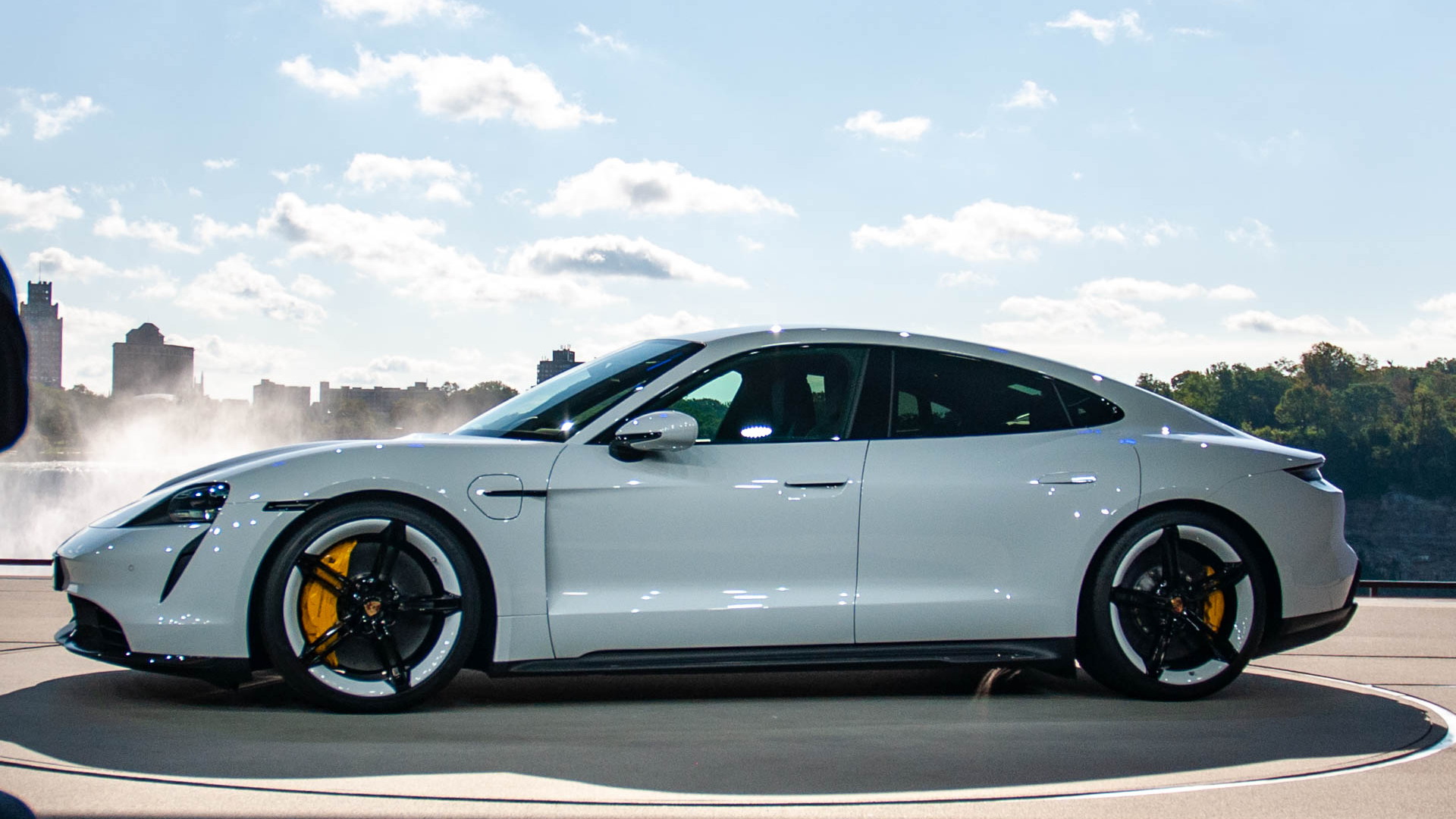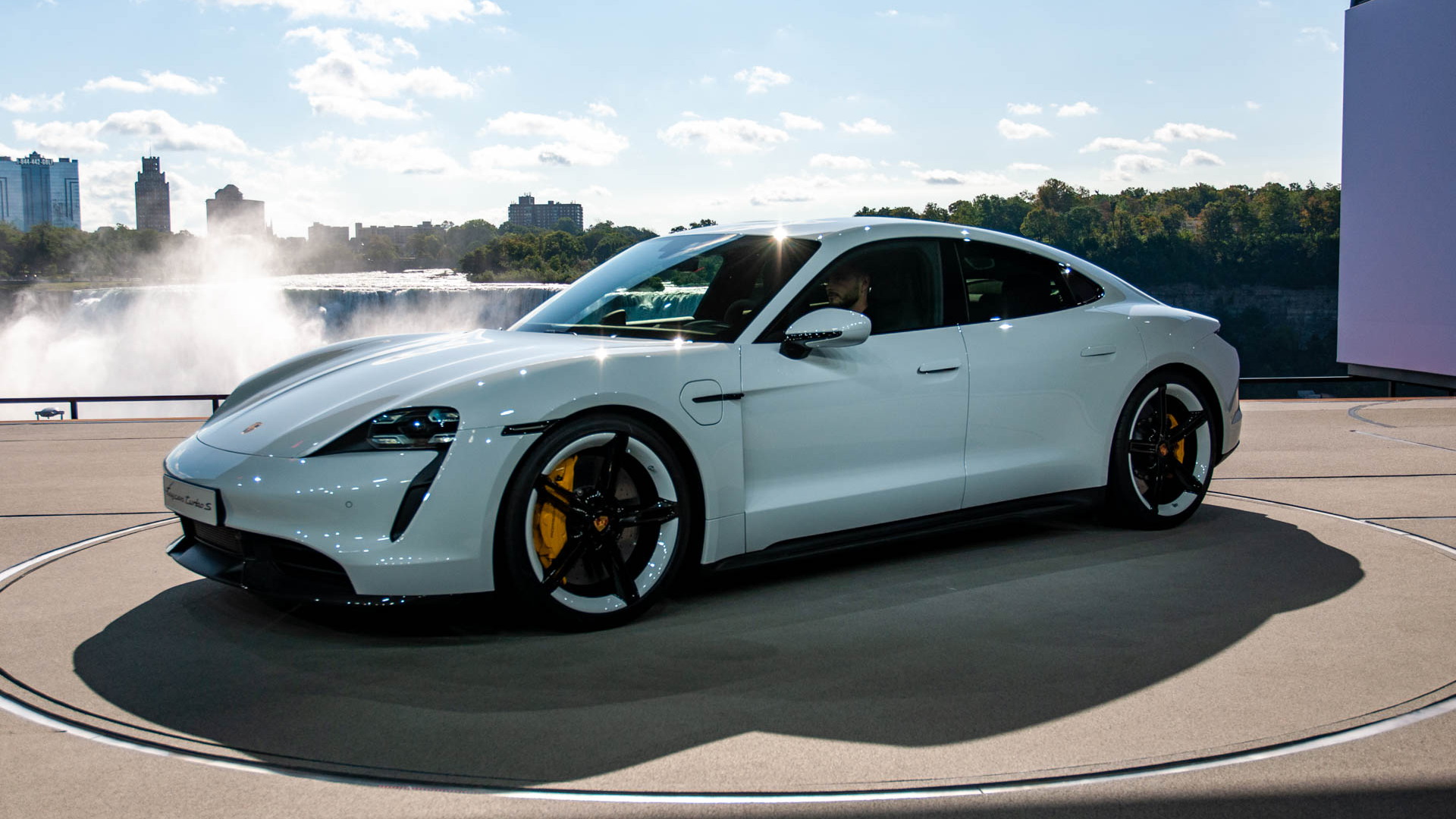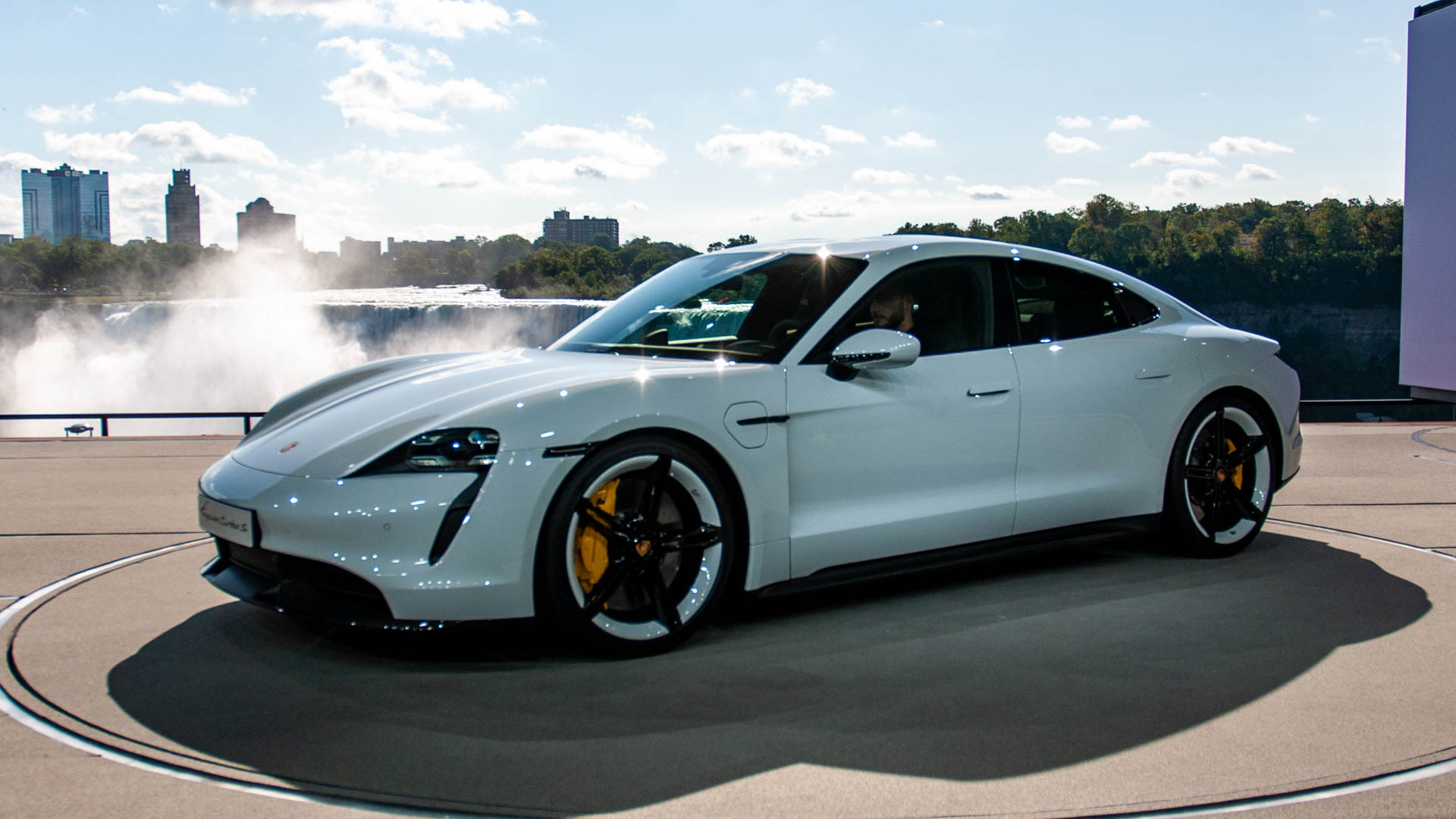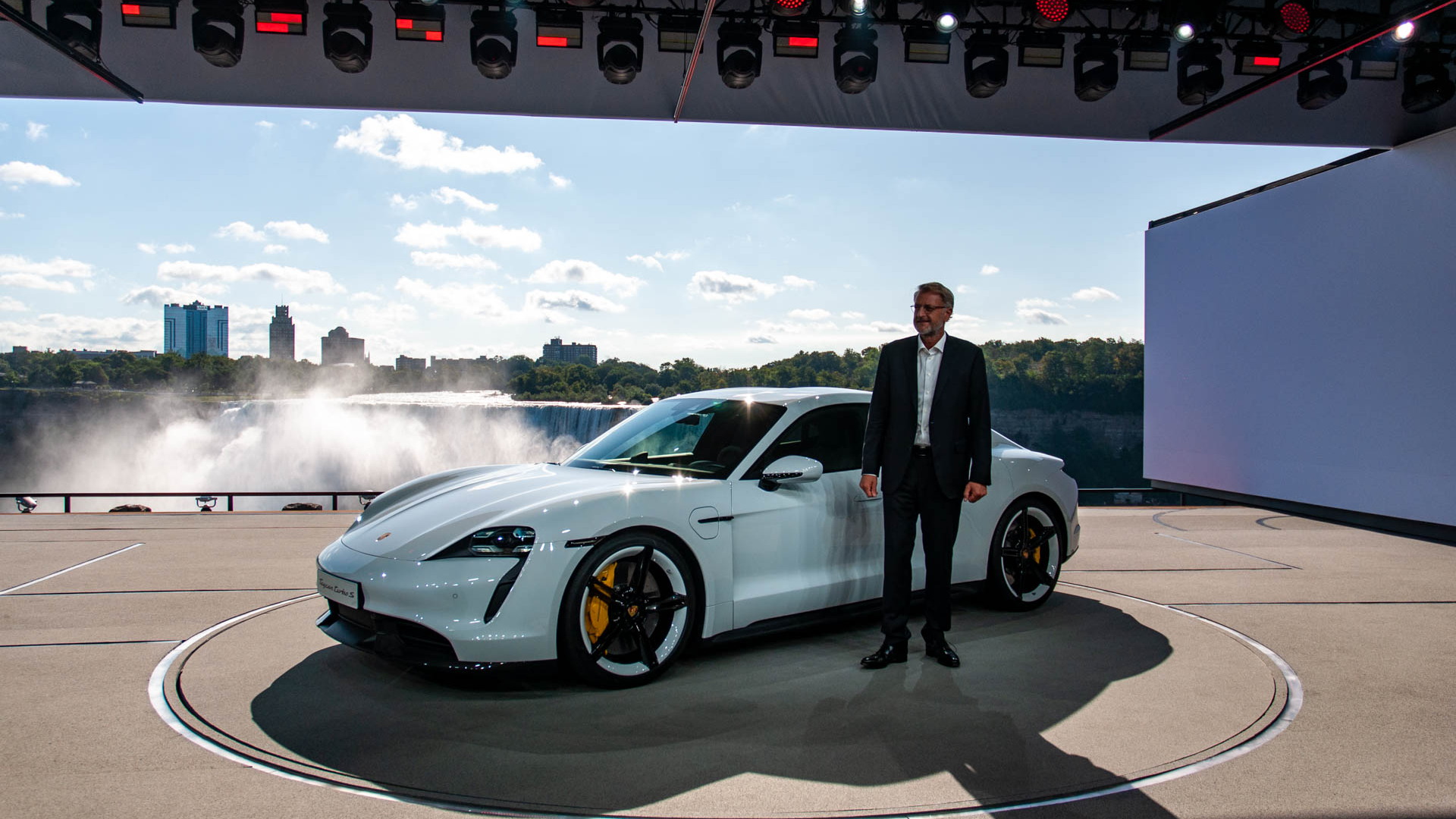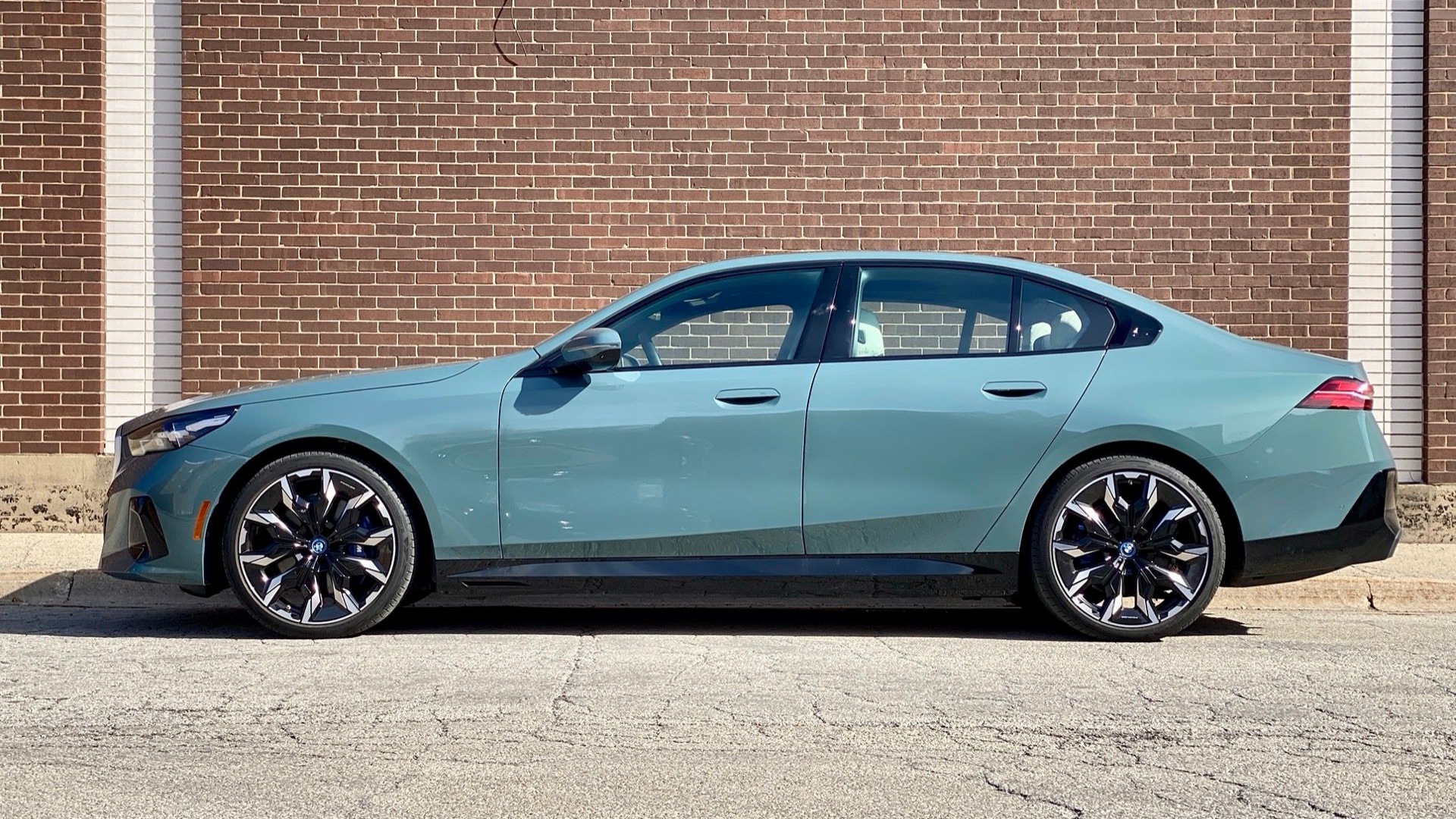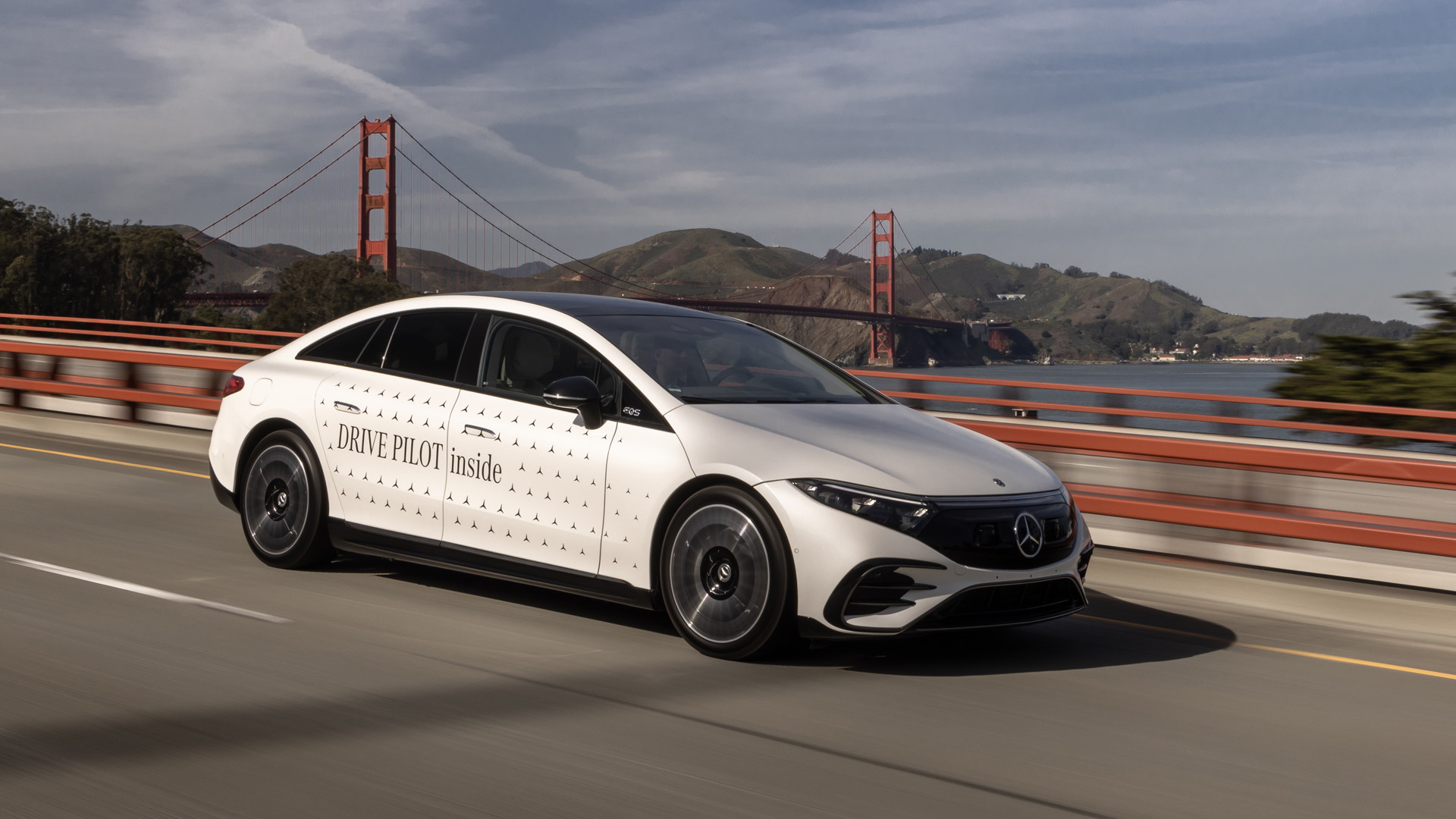The word “Turbo” has a long history at Porsche, and so the 2020 Taycan will “carry the sub-brand into the full electric world,” according to product-line chief Stefan Weckbach. No matter how odd that choice is—and we think it’s pretty bizarre—the first two models are both fast, but holding with longstanding tradition, the Turbo S is faster than the Turbo.
That means 0-to-60-mph acceleration of 2.6 seconds versus 3.0 seconds, and a sprint from 0 to 124 mph in 9.8 seconds rather than 10.6 seconds.
Trading power for range
Predictably, the more powerful car has slightly less rated range, though EPA ratings have not yet been released. On the European WLTP cycle, which is usually a bit more generous than the EPA, Porsche says the Turbo gets 381 to 450 km (237 to 280 miles). The Turbo S has a slightly higher minimum of 388 km (241 miles) but a lower maximum, at 412 km (256 miles).
These performance differences are due to changes in two key areas. The first is centered on the motor and electronics that power the front wheels, the second is found in the software that controls the delivery and distribution of battery power to both front and rear motors.
While the Taycan Turbo and Turbo S have similar rear powertrains, the front motor carries an inverter rated at 600 amps on the more-powerful car, but only 300 amps on the Turbo. That means the Turbo S can simply draw more power from the car’s 93-kwh battery pack and deliver it to those wheels.
Specifically, the Turbo’s front-motor maximum output is 175 kw (235 hp), while it’s 190 kw (255 hp) on the Turbo S.

2020 Porsche Taycan
Launch control
In addition, a Launch Control mode is available exclusively on the Turbo S, providing a temporary “overboost” that raises the maximum torque delivered by both motors for 2.5 seconds. So the 335-kw (450-hp) rear motor's output rises from 406 to 450 pound-feet, and the front from 295 to 325 lb-ft.
That delivers maximum possible acceleration from a standing start without spinning the wheels. We experienced it, and it thrusts passengers back into their seats just as a high-performance Tesla does. Porsche claims the Taycan can deliver consistent maximum-power runs dozens of times, unlike competitors whose software dials down the maximum acceleration as powertrain heat rises and the battery’s state of charge declines.
Both versions use an unusual two-speed gearbox for the rear motor, unlike almost all other electric cars today that have a single-speed transmission. In Sport mode, the control software keeps the gearbox in the lower gear for faster acceleration, while Normal driving mode prioritizes the higher gear under most circumstances. Range mode, meanwhile, keeps the car exclusively in second gear.
Porsche Taycan pricing
The Turbo and Turbo S differ in some trim and equipment details, too. The Turbo comes standard with 20-inch wheels and tires, while they’re 21 inches on the Turbo S—though both models have a range of wheel and tire options. The Turbo S adds ceramic composite brakes (with yellow calipers), rear-axle steering, the PDCC dynamic anti-roll suspension, and additional tech features yet to be detailed.
The 2020 Porsche Taycan is priced in the vicinity of the 911 Turbo and Turbo S. It starts at $152,250 for the Turbo and $186,350 for the Turbo S. Launch prices of $154,660 and $188,960 apply, respectively.
Disclosure: Porsche paid for airfare, lodging, and meals to enable Internet Brands Automotive to bring you this first-person report.
